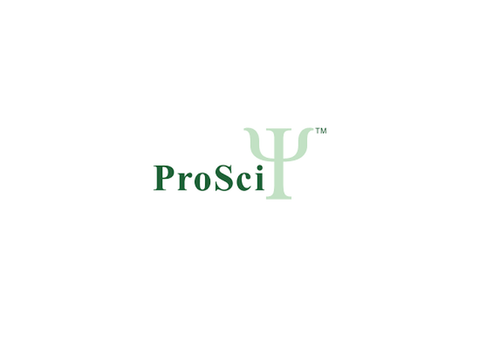Product Description
CHMP4B Antibody | 22-916 | ProSci
Host: Rabbit
Reactivity: Human, Mouse, Rat
Homology: N/A
Immunogen: Recombinant fusion protein containing a sequence corresponding to amino acids 1-224 of human CHMP4B (NP_789782.1) .
Research Area: Autophagy, Cell Cycle, Chemokines & Cytokines, Immunology, Signal Transduction
Tested Application: WB, IHC
Application: WB: 1:500 - 1:2000
IHC: 1:50 - 1:200
Specificiy: N/A
Positive Control 1: SH-SY5Y
Positive Control 2: HT-29
Positive Control 3: 293T
Positive Control 4: NCI-H460
Positive Control 5: THP-1
Positive Control 6: SKOV3
Molecular Weight: Observed: 36kDa
Validation: N/A
Isoform: N/A
Purification: Affinity purification
Clonality: Polyclonal
Clone: N/A
Isotype: IgG
Conjugate: Unconjugated
Physical State: Liquid
Buffer: PBS with 0.02% sodium azide, 50% glycerol, pH7.3.
Concentration: N/A
Storage Condition: Store at -20˚C. Avoid freeze / thaw cycles.
Alternate Name: Charged multivesicular body protein 4b, Chromatin-modifying protein 4b, CHMP4b, SNF7 homolog associated with Alix 1, SNF7-2, hSnf7-2, Vacuolar protein sorting-associated protein 32-2, Vps32-2, hVps32-2, CHMP4B, C20orf178, SHAX1
User Note: Optimal dilutions for each application to be determined by the researcher.
BACKGROUND: This gene encodes a member of the chromatin-modifying protein/charged multivesicular body protein (CHMP) protein family. The protein is part of the endosomal sorting complex required for transport (ESCRT) complex III (ESCRT-III) , which functions in the sorting of endocytosed cell-surface receptors into multivesicular endosomes. The ESCRT machinery also functions in the final abscisson stage of cytokinesis and in the budding of enveloped viruses such as HIV-1. The three proteins of the CHMP4 subfamily interact with programmed cell death 6 interacting protein (PDCD6IP, also known as ALIX) , which also functions in the ESCRT pathway. The CHMP4 proteins assemble into membrane-attached 5-nm filaments that form circular scaffolds and promote or stabilize outward budding. These polymers are proposed to help generate the luminal vesicles of multivesicular bodies. Mutations in this gene result in autosomal dominant posterior polar cataracts.
 Euro
Euro
 USD
USD
 British Pound
British Pound
 NULL
NULL
















